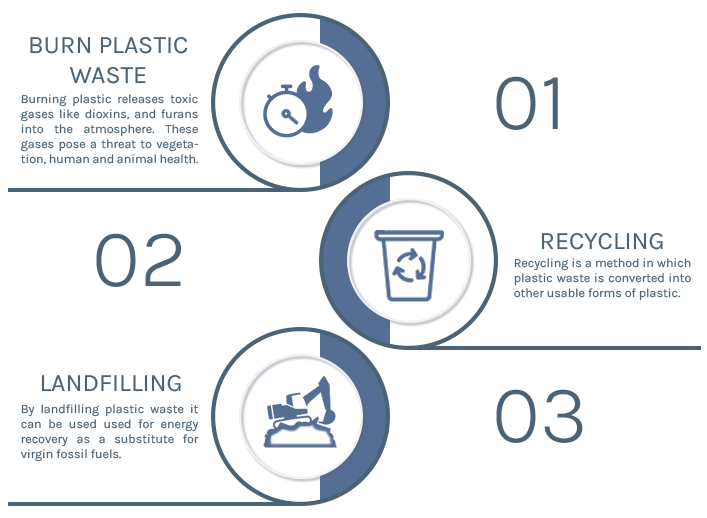PLASTIC WASTE RECYCLING
Plastic waste is one of the most polluting types of solid waste on the planet. Plastic waste’s slow decomposition results in the death of billions of live animals in both marine and terrestrial ecosystems. If present plastic consumption continues, worldwide plastic-waste volumes are going to be the double by 2030, escalating an already critical environmental problem to a new level.
To dispose of plastic waste, researchers from all over the world tried a variety of strategies to degrade or convert it into a useable form, taking into consideration major societal and environmental issues. The three main strategies agreed by researchers are:

Out of the three strategies, recycling is the most popular. Recycling plastic is the process of recovering waste or scrap plastic and turning the materials into functional and useful goods. Nearly all types of plastic could be recycled.
The goal of recycling plastic is to reduce excessive greenhouse gas emissions while reducing the demand for virgin resources in the manufacture of new plastic items. To conserve resources and diverts plastics from landfills or unintended destinations such as oceans.
Plastic recycling process:
-
Collect plastic items from homes, businesses, and other sites.
-
Sort items by the type of plastic they are made from.
-
Remove labels and clean the items.
-
Ground-up plastic items and shred them into flakes.
-
Flake are melted down and formed into small pellets, each about the size of a grain of rice.
The pellets are packaged and sold to businesses that can melt them down and turn them into a variety of products. Just think of how many plastic toys, tools, electronic devices, and other items you have in your home that have been created out of recycled plastic!
Share this post!
